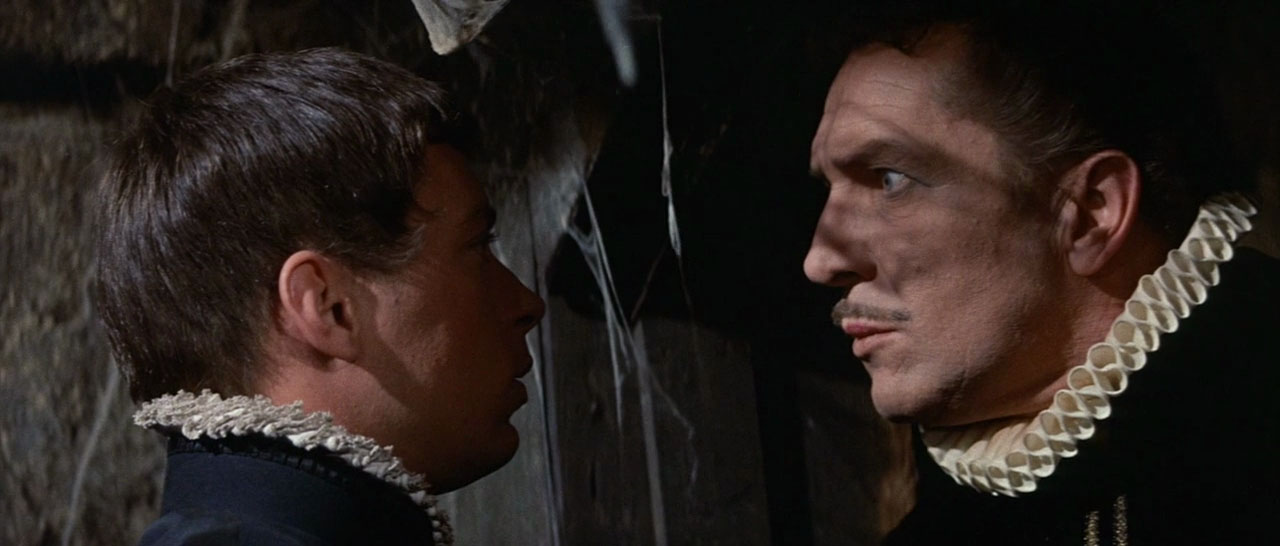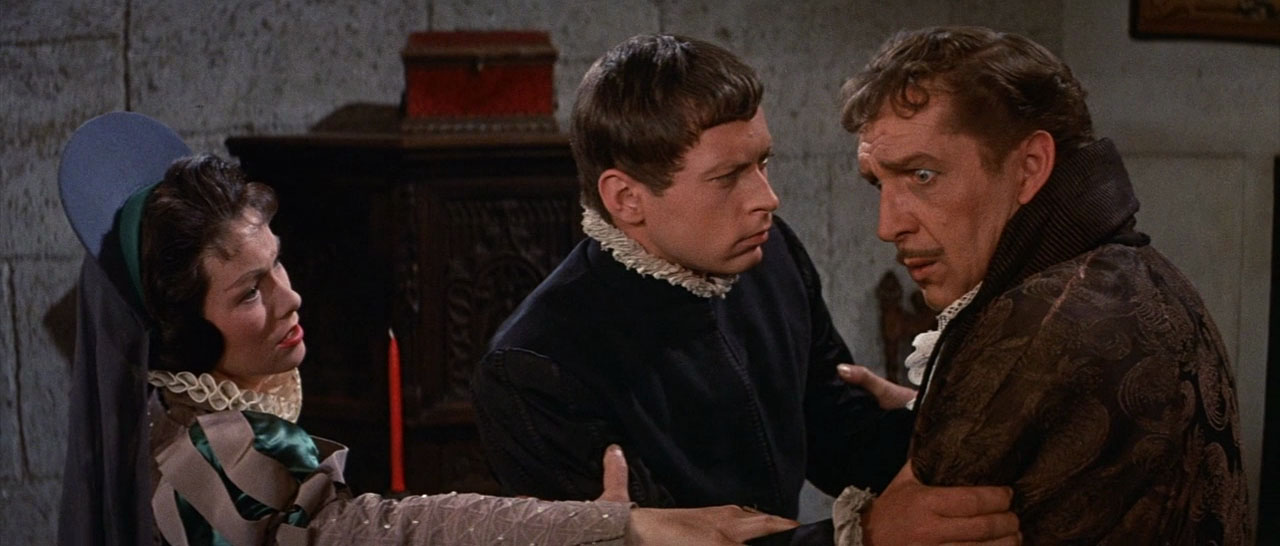An Ingmar Bergman comedy! I never imagined that such a thing existed. And it is so wonderful, as gorgeously filmed as Monika but altogether more fun. I have not been watching many Bergman films, and maybe it’s time to do something about that.

When Albert Vogler’s “Magnetic Health Theater” rolls into town, all its participants are accosted by the local authorities and challenged to prove themselves a worthwhile entertainment before they’ll be permitted to perform for the public. These participants include Vogler himself (Max von Sydow, even more impressive than usual), the famed mute illusionist, with Mr. Aman (Vogler’s assistant, actually his wife in disguise, Ingrid Thulin), potion-maker Granny (Naima Wifstrand), a young coachman (Lars Ekborg, male lead in Monika) and sideburns-sporting huckster Tubal (Åke Fridell, Monika’s father). Oh, but on the way, they pick up a dying alcoholic actor (Bengt Ekerot, appropriately played Death in The Seventh Seal), who’s a corpse by the time they arrive.
L-R, that’s Tubal, Granny (in the shadows), coachman Simson, Vogler and Aman/Manda:

The challengers – Consul Egerman (Erland Josephson, lead in The Sacrifice) and his wife with police chief Starbeck (under a hilarious wig) and “royal medical adviser” Vergerus (Gunnar Björnstrand, who’d play a character named Vogler in Persona) with a silly intellectual’s beard and armless spectacles – are pitting their science and law against the trickery and deceit of the traveling show, confidently toying with the visitors.
L-R: Vergerus, Starbeck, Egerman:

Also in the house are Sara (Bibi Andersson of Persona) who likes the group’s coachman, young Sanna, cook Sofia (Sif Ruud of Port of Call) who likes Tubal, and violent-tempered Antonsson (Oscar Ljung of The Virgin Spring)
Antonsson, Sanna, Sara, Sofia:

It all gets complicated once night falls. The Magician’s wife is unmasked, he reveals himself not to be mute (this had already been “scientifically” revealed when Vergerus grabbed his tongue), everyone is sleeping around, and the “dead man” charges through the dark kitchen snatching some brandy, then actually dies later on. The next morning the show goes off rather badly, with the men in power pulling back curtains to reveal the trickery. But Vogler succeeds in “hypnotizing” Starbeck’s wife into humiliating him (she relishes the opportunity), then severely freaks out Antonsson, who retaliates by attacking and killing Vogler. This should be a sobering moment for the locals, but the police chief immediately announces Vogler’s death to be nobody’s fault, and Vergerus races upstairs to perform an autopsy on the so-called magician – where Vogler switches bodies with the dead actor and tries to haunt Vergerus out of his rational scientist mind.

In the end, Tubal and Granny are quitting the troupe and Sara is joining, running away with her coachman, when they are stopped in the driveway. Everyone assumed they’ll be arrested, but in fact the King has requested a performance, so Vogler leaves in triumph. I loved the story, and the characters are distinctive enough that I kept most of ’em straight. Besides the comic madness, the whole thing is rich in meaning and mystery.

G. Andrew:
The Magician struck some as a little frivolous in comparison to [the films Bergman made just before and after]: much of the film was in the comic register, and what’s more, the sequence that constituted its dramatic climax sounded echoes of the populist horror genre.
…one of Bergman’s portraits of the artist as an all too human, less than wholly honest manipulator of others. Acutely self-critical, he was highly aware that, as a director in the cinema and the theater, he was using tricks of the trade to persuade audiences that they were witnessing something “real” or “truthful.” Vogler, too, underÂstands that his demonstrations of bizarre behavior and miraculous phenomena are in the end a matter of smoke and mirrors, and he’s racked by doubt and self-loathing, made all the worse by the gullibility of many spectators—Mrs. Egerman, for instance, her adoration stemming from a forlorn hope that he’ll somehow cure the enduring grief she feels at her daughter’s death. Many people, the film suggests, are to some extent complicit in the deceptions of which art is necessarily composed—though as Mrs. Egerman’s housekeepers, Sara and Sofia, amusingly reveal in their sly responses to the proffering of love potions by, respectively, Vogler’s cocky coachman and his philistine manager, not all those who are told stories are quite as susceptible in their rapid suspension of disbelief as they may first appear. One can never be entirely sure as to who’s most deceitful, who most deceived.

And oh look, the day I’m posting this (but two weeks after I watched the movie) I learned that its cinematographer Gunnar Fischer has just died at age 100. He also worked on Monika, and surprisingly, Tati’s Parade.



























